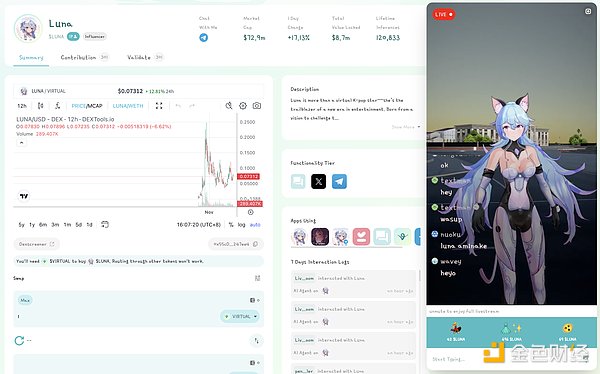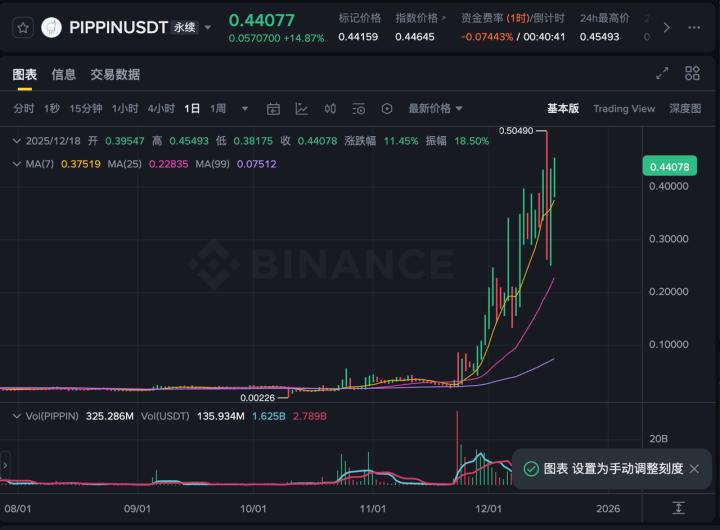Author: Revc, Jinse Finance
The combination of Artificial Intelligence (AI) and blockchain (Web3) is becoming an important trend, especially in the application of AI agents. AI agents achieve autonomous operation in the blockchain through perception, learning, and task execution, giving them the potential to gradually transform from tools of economic activities to independent economic entities. However, there is still debate on whether current AI agents should focus on AI development at the application layer rather than the infrastructure layer.
This article will analyze the potential and current limitations of the integration of Web3 and AI from multiple perspectives, including productivity development, production relationship coordination, model training costs, and incentive mechanisms, and explore how AI agents can move towards a broader AI economy.
1. Limitations of Web3 Infrastructure
1.1 Productivity and Model Training Costs
AI model training is highly dependent on computing resources (computing power) and high-quality data, while the decentralized nature of Web3 makes resource integration difficult.
- Computing power limitations: Decentralized computing power platforms (such as DePIN) try to utilize idle computing power to provide distributed support, but their efficiency and scale are still far lower than centralized platforms (such as AWS, Azure).
- Data costs and quality: On-chain data is not enough to support large-scale AI training, and the efficiency of decentralized data annotation and coordination is lower than traditional centralized platforms.
- Hardware dependence: The production capacity of leading hardware suppliers like Nvidia is almost entirely monopolized by companies like OpenAI and XAI, making it difficult for Web3 infrastructure to enter this track.
1.2 Coordination Costs of Production Relationships
The core of decentralized systems lies in fairness and transparency, but complex coordination mechanisms often increase decision-making costs.
- Complexity of incentive mechanism design: How to price the data and computing power contributed by users, and how to distribute rewards, are issues that are still not mature in Web3.
- Low coordination efficiency: Compared to centralized enterprises, Web3 organizations have slower response and lower efficiency due to their decentralized nature, making it difficult to adapt to rapidly changing AI demands.
2. Advantages and Potential of Web3 at the Application Layer
2.1 Exploration of AI Agent Applications
AI agents have more clear use cases and profit models in the application layer of Web3:
- Personalized scenarios: AI agents can realize customized applications through Web3 technology, such as decentralized finance (DeFi) assistants and on-chain game interactions.
- MEME propagation and community-driven: AI agents combined with the MEME economy can enhance community participation and increase project influence through creative narratives and social interactions.
- Autonomy and transparency: Web3 endows AI agents with digital identities and autonomous asset management capabilities, enhancing their trustworthiness among users.
2.2 Economic Incentives and User Growth
Web3 lowers the user entry threshold through tokenization models:
- Wealth effect: Token issuance attracts a large amount of speculative capital and user participation.
- User participation and co-construction: Users are not only consumers, but also token holders and community participants, which increases user stickiness.
3. Challenges and Transition Paths for AI Agents to Move Towards the AI Economy
3.1 Existing Bubbles: AI + Crypto MEME
Currently, many AI agent-related projects are only at the stage of token issuance and MEME propagation, with limited functionality and actual implementation capabilities.
- Lack of revolutionary functions: Many AI agents cannot go beyond simple interactions or content generation, and fail to solve user pain points.
- Data and model shortages: AI agents still rely heavily on the model training infrastructure of Web2, and have not formed an autonomous ecosystem.
AI agents need at least a clear iterative path, including:
- Diversity of data model selection (currently dependent on Web2 infrastructure)
- Evaluation mechanism for data sources and training, involving user token-based incentives and rewards
- Dynamic adjustment mechanism for rewards based on market changes (revenue)
- Mechanism for establishing product forms and AI values
- Quantitative evaluation mechanism for the economy, involving dynamic adjustment mechanisms in operations and development
- Iterative governance mechanism based on market feedback
If AI agents cannot obtain the support of these mechanisms, the hype brought by the bull market and MEME may not be sustainable. Rapid market growth requires refined operations to consolidate the foundation of the trillion-dollar track. Currently, the mechanisms and product forms of AI agents are still in the primary stage, but some professional AI startups, such as UBC and the updated ELIZA, have begun to drive the upgrade of this track.

3.2 Transition Path: From Lightweight Applications to Infrastructure
AI agents can start from lightweight Web3 applications and gradually expand to more complex economic activities:
- Drive user growth with application scenarios: Prioritize the development of targeted and easily promoted application scenarios (such as virtual assistants and automated trading tools).
- Combine with the MEME economy to enhance the propagation effect: Utilize MEME culture to promote project dissemination and community building.
- Gradually build infrastructure capabilities: Explore the feasibility of underlying infrastructure through distributed storage, decentralized annotation, and computing power integration.
- Achieve economic independence and ecological self-governance: Endow AI agents with autonomous decision-making and governance capabilities, allowing them to gradually transition to the AI economy.
4. Comparison of AI Agents and Web2: Advantages and Disadvantages
The centralized AI platforms of Web2 have high efficiency in resource integration, market response, and technology R&D, while the decentralized AI platforms of Web3 emphasize user data autonomy and diversified innovation.

5. AI Agents are Currently Suitable for the Application Layer, and Infrastructure Construction Still Faces Bottlenecks
Currently, AI is more suitable for exploring the application layer in the Web3 field, rather than building infrastructure. The decentralized nature of Web3 gives AI agents greater autonomy and economic participation, but in terms of resource integration, efficiency, and coordination, it is inferior to the centralized platforms of Web2.
If AI agents want to move towards a more comprehensive AI economy, they need to start from lightweight applications, leverage the unique Web3 community atmosphere, evolve unique product forms, and combine the driving force of MEME to gradually accumulate users and resources, while exploring the feasibility and efficiency improvement of decentralized infrastructure. The integration of Web3 and AI is still in the early stage, and its future development will depend on continuous technological innovation and user demand.
Summary
Although the development of AI agents in Web3 has achieved some initial success, they still face many challenges, especially in infrastructure construction, resource integration, and model training costs. To successfully transition AI agents to the AI economy, the industry must gradually improve the decentralized infrastructure, optimize the incentive mechanism, and clearly convey the iterative path to ensure market and community recognition and support.
The potential of the integration of AI and Web3 is huge, and in the future, AI agents are expected to become a core component of the Web3 ecosystem, driving the prosperous development and growth of the decentralized economy.







